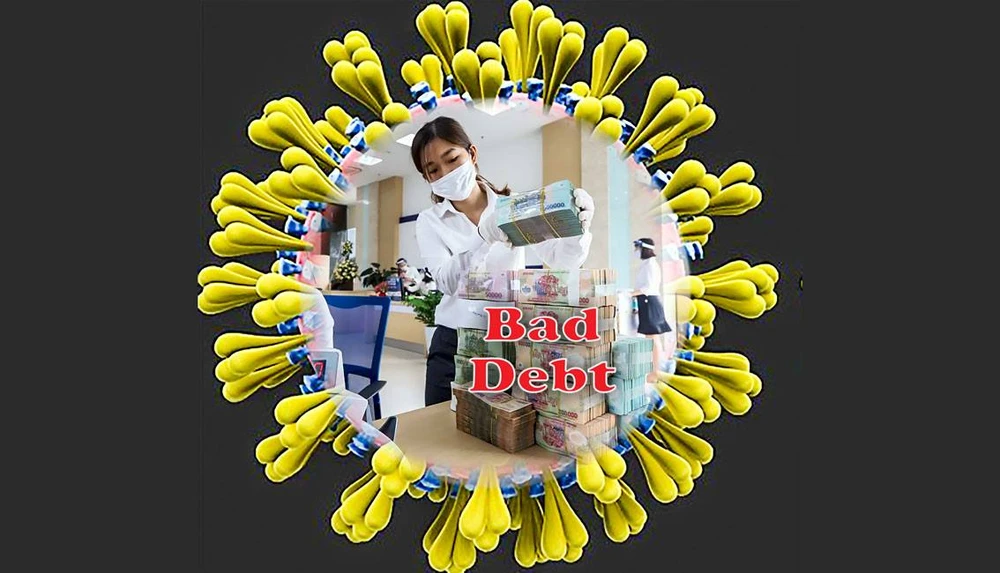
The SBV analyses that if the pandemic is brought under control in the first quarter, the ratio of bad debts on the balance sheet and the debt sold to the Vietnam Asset Management Company (VAMC) will be 2.9% to 3% at the end of the year. If the pandemic flows into the end of the second quarter, the bad debt ratio will increase to nearly 4%. In a talk with Saigon Investment, Dr. Nguyen Tri Hieu, a finance and banking expert, clarified the issue of bad debts.
JOURNALIST: - Sir, what is your comment on the SBV's estimate of bad debt ratio for this year?
Dr. NGUYEN TRI HIEU: - State Bank calculations are actually based on optimism. In this complicated and unpredictable situation of the Covid-19 pandemic, many businesses have either stopped or slowed operations or some are even on the verge of bankruptcy. This is happening to both large and small scale businesses. Therefore, bad debts will increase sharply because the current revenue of businesses and individuals is extremely low, leading to a sharp decline in the ability to repay debts.
The first quarter has passed and the pandemic is nowhere in control, and if by the end of the second quarter, Vietnam still cannot contain the pandemic, then the economy will not remain stable. The economic situation may stabilize starting third quarter only if the number of infected people are brought down to zero and no further deaths are reported.
Of course, even after the pandemic is brought under control, the economy will still take a long time to recover again, perhaps even one year. Therefore, looking optimistically that this disease is well in control by the end of the second quarter, many businesses will continue to find it difficult to repay their debt, and may need to restructure.
In such a case, bad debts will increase and at this point no one can predict how much the bad debts will increase, but 3% or 4% is still too optimistic. If we are still unable to control the disease by June or we see more outbreaks later, the problem of bad debts will become a huge unknown and no one will be able to predict how things will turn out.
Vietnam's current economy is facing many difficulties, and the input and output of our exports are seriously affected because the global supply chain has been broken. Consumer demand is very low in the present Vietnamese domestic market, and production in several segments is lying stagnant. In a report to the Prime Minister on the impact of the Covid-19 pandemic on various enterprises, the Vietnam Chamber of Commerce and Industry (VCCI) said that nearly 35,000 businesses withdrew from the market in the first three months of this year.
According to VCCI, this is a record number ever and I think this number may have increased further by now. Enterprises in difficulty and in stagnation will cause bad debt to increase as there is no way to stop this from happening. Instead, it is necessary to accept reality and hope and pray that this disease passes quickly so that the economy recovers consequently.
- In the current context, is there any solution for controlling bad debt, so that if it increases it will not become a deeper crisis?
- Enterprises must be supported now so that they can recover. The Government has issued Directive 11, in which two important support packages of VND 250,000 bn in credit package and VND 30,000 bn in fiscal package will provide much needed support. Currently, the total credit support package implemented by banks has reached VND 300,000 bn. Accordingly, banks have provided new loans with preferential interest rate, and at the same time frozen debts, rescheduled debts, are not transfering debt groups to businesses, have reduced interest rates, and done debt restructuring for businesses, as appropriate steps to saving businesses.
Until the end of 2019, the problem of bad debts was being settled very positively by banks and the bad debt ratio had decreased, when suddenly in early 2020 the pandemic struck. Although bad debts have not increased much, because banks can freeze debts and not transfer debt groups, but the actual bad debt is increasing. However, it is difficult to resolve these debts, because at this moment if debt recovery is undertaken aggressively, businesses will face an early perish. Therefore, when debt repayment capability of enterprises is very low, it is impossible to apply tough measures to recover debts.
However, now banks must be very careful with new loans, because at this time the repayment capability of both individuals and businesses has greatly decreased. Lending is now in parallel with bad debts, so a strict new lending process is needed. At the same time, the issue of additional provisions to have a reserve fund for bad debts also needs attention. Although these will affect profits, banks have to accept the decline and even losses, because they cannot keep the same profits as previous years to deal with the current difficult times.
At this time, banks have to proactively advise their business customers about business plans, input and output, and cost reduction solutions, so as to limit the increase of bad debts. Currently, many businesses are struggling as the input has no raw material and the output has no market for sales. This is also the general current global situation, with the entire supply chain in disarray and exports almost at a standstill.
- Thank you very much.




















